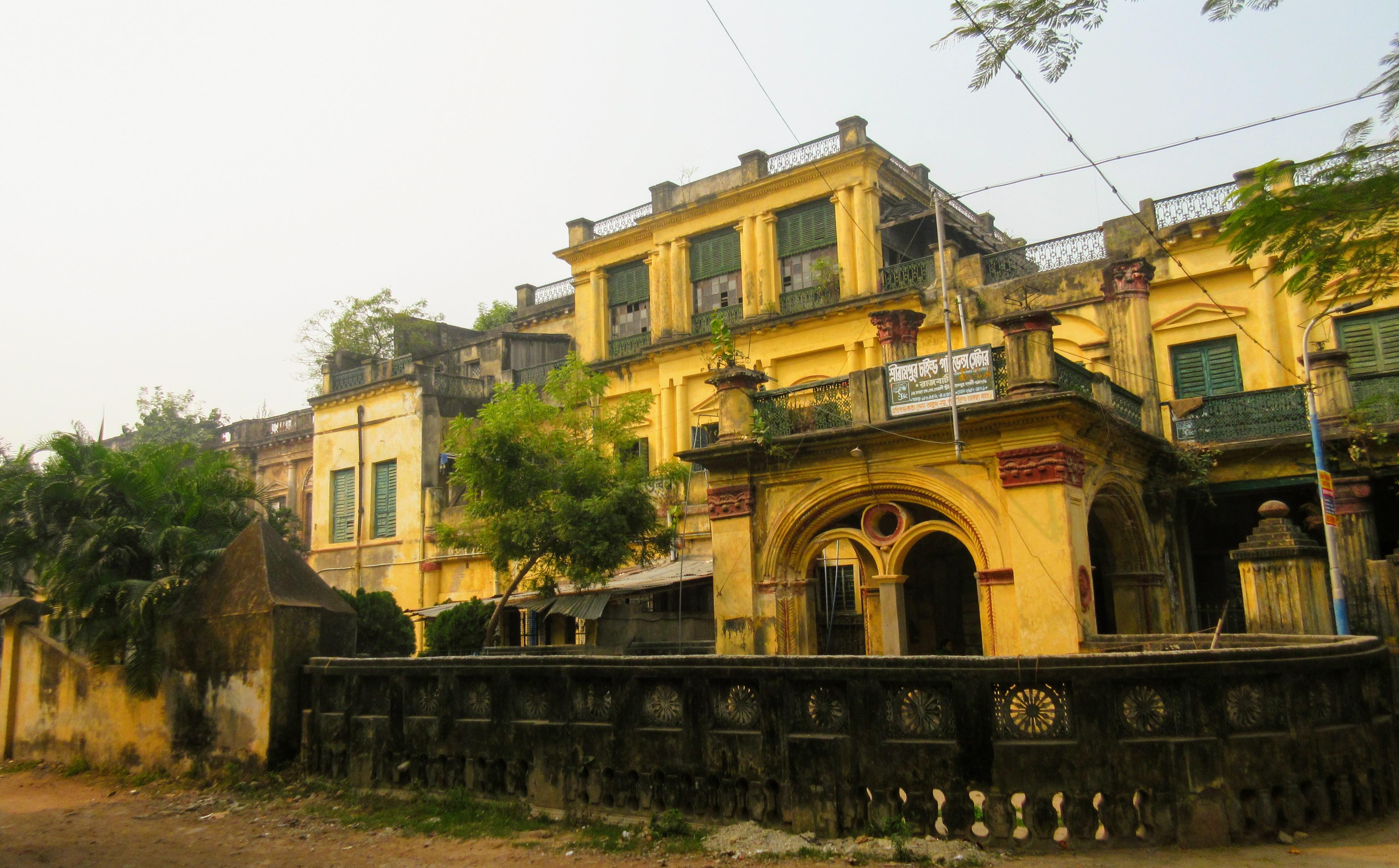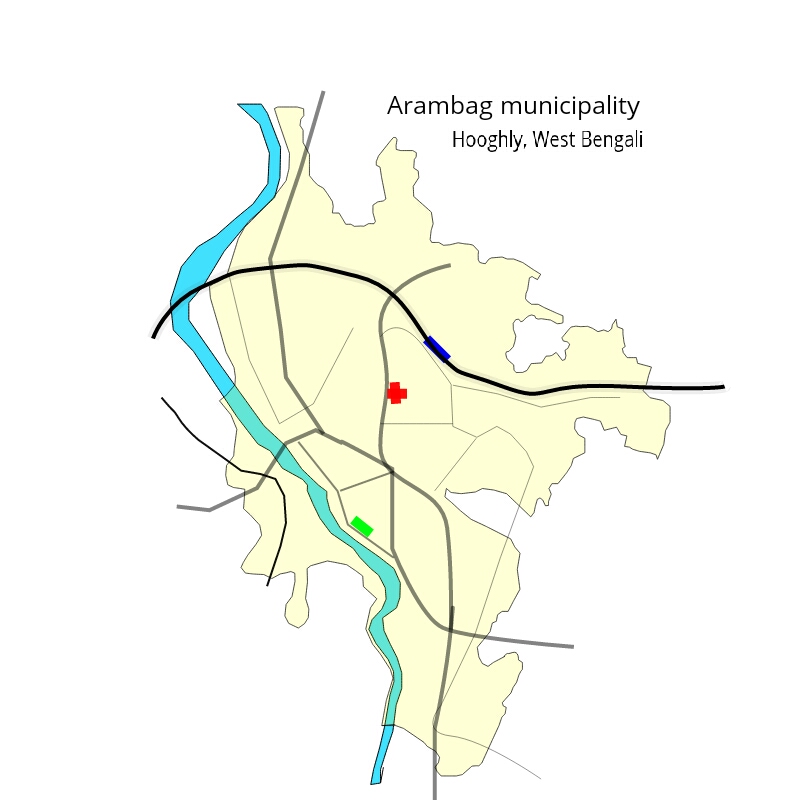|
Rathayatra Of Mahesh
The Rathayatra of Mahesh ( bn, মাহেশের রথযাত্রা) is the second oldest chariot festival or Rath Yatra in India (after '' Rath Yatra of Puri'') and oldest in Bengal, having been celebrated since 1396. It is held in Mahesh, a historical locality within Serampore in the Indian state of West Bengal. It is a week-long festival and a grand fair is held at that time. ''indianexpress.com''. Retrieved 13 July 2021 People throng to have a share in pulling the long ropes (Rosshi) attached to the chariots of Lord |
Serampore
Serampore (also called ''Serampur'', ''Srirampur'', ''Srirampore'', ''Shreerampur'', ''Shreerampore'', ''Shrirampur'' or ''Shrirampore'') is a city of Hooghly district in the Indian state of West Bengal. It is the headquarter of the Srirampore subdivision. It is a part of the area covered by Kolkata Metropolitan Development Authority (KMDA) and Greater Kolkata. It is a pre-colonial city on the west bank of the Hooghly River. It was part of Danish India under the name ''Frederiknagore'' from 1755 to 1845. Geography Location Serampore is located at . The area consists of flat alluvial plains, that form a part of the Gangetic Delta. This belt is highly industrialised. Police stations Serampore police station has jurisdiction over Serampore and Baidyabati Municipal areas, and parts of Sreerampur Uttarpara CD Block. Serampore Women police station has been set up. Urbanisation Srirampore subdivision is the most urbanized of the subdivisions in Hooghly district. 73.13% of ... [...More Info...] [...Related Items...] OR: [Wikipedia] [Google] [Baidu] |
Samādhi
''Samadhi'' (Pali and sa, समाधि), in Buddhism, Hinduism, Jainism, Sikhism and yogic schools, is a state of meditation, meditative consciousness. In Buddhism, it is the last of the eight elements of the Noble Eightfold Path. In the Ashtanga (eight limbs of yoga), Ashtanga Yoga tradition, it is the eighth and final limb identified in the ''Yoga Sutras of Patanjali, Yoga Sutras'' of Patanjali. In the oldest Buddhist sutra, suttas, on which several contemporary western Theravada teachers rely, it refers to the development of an investigative and luminous mind which is Upekkha, equanimous and mindful. In the yogic traditions, and the Buddhist commentarial tradition on which the Burmese Vipassana movement and the Thai Forest Tradition, Thai Forest tradition rely, it is interpreted as a meditative absorption or trance, attained by the practice of ''Dhyāna in Buddhism, dhyāna''. Definitions ''Samadhi'' may refer to a broad range of states. A common understanding regards ... [...More Info...] [...Related Items...] OR: [Wikipedia] [Google] [Baidu] |
Ramakrishna
Ramakrishna Paramahansa ( bn, রামকৃষ্ণ পরমহংস, Ramôkṛṣṇo Pôromohôṅso; , 18 February 1836 – 16 August 1886),——— — also spelled Ramakrishna Paramahamsa, born Gadadhar Chattopadhyaya,, was an Indian Hindu mystic and religious leader; who after adhering to various religious practices from the Hindu traditions of Bhakti yoga, Tantra, and Advaita Vedanta, as well as from Islam and Christianity, proclaimed the world's various religions as "so many paths to reach one and the same goal", thus validating the essential unity of religions. Ramakrishna's followers came to regard him as an avatar, or divine incarnation, as did some of the prominent Hindu scholars of his day. Ramakrishna, who experienced spiritual ecstasies from a young age, started his spiritual journey as a priest at the Dakshineshwar Kali Temple, built by Rani Rashmoni. Soon his mystical temperament gained him widespread acclaim amongst the general public as a Guru, a ... [...More Info...] [...Related Items...] OR: [Wikipedia] [Google] [Baidu] |
Indian Roller
The Indian roller (''Coracias benghalensis'') is a bird of the family Coraciidae. It is long with a wingspan of and weighs . The face and throat are pinkish, the head and back are brown, with blue on the rump and contrasting light and dark blue on the wings and tail. The bright blue markings on the wing are prominent in flight. The sexes are similar in appearance. Two subspecies are recognised. The Indian roller occurs widely from West Asia to the Indian subcontinent. Often found perched on roadside trees and wires, it is common in open grassland and scrub forest habitats, and has adapted well to human-modified landscapes. It mainly feeds on insects, especially beetles. The species is best known for the aerobatic displays of males during the breeding season. Adult males and females form pair bonds and raise the young together. The female lays 3–5 eggs in a cavity or crevice, which is lined with a thin mat of straw or feathers. The roller is the state bird of three Indian sta ... [...More Info...] [...Related Items...] OR: [Wikipedia] [Google] [Baidu] |
Ghatal
Ghatal is a city and a municipality in Paschim Medinipur district, West Bengal, India. It is the headquarters of the Ghatal subdivision. History In ancient times, when Tamralipta was an active port, Ghatal had its own ‘Bandar’ (port), 3 km east of Ghatal PS, used for anchoring boats and ships with goods. Now, the place is the confluence of the Dwarakeswar, Shilabati, Damodar and Jhumi. Ghatal was famous for manufacturing of cotton goods, tussar silk, bell metal utensils etc., and the Dutch had a factory here. The activities continued until the early British period. In the early British period, Ghatal PS and Chandrakona PS were a part of Jahanabad (later Arambagh) in Hooghly district and were transferred in 1872 to Midnapore district. These became a part of the newly formed Ghatal subdivision in 1876. Daspur PS became a part of it in 1877. Ghatal municipality was formed in 1869. Geography Location Ghatal is located at . It has an average elevation of 5 metre ... [...More Info...] [...Related Items...] OR: [Wikipedia] [Google] [Baidu] |
Goghat
Goghat is a village in the Goghat I CD block in the Arambag subdivision of the Hooghly district in the Indian state of West Bengal. Geography Location Goghat is located at . Area overview The Arambagh subdivision, presented in the map alongside, is divided into two physiographic parts – the Dwarakeswar River being the dividing line. The western part is upland and rocky – it is extension of the terrain of neighbouring Bankura district. The eastern part is flat alluvial plain area. The railways, the roads and flood-control measures have had an impact on the area. The area is overwhelmingly rural with 94.77% of the population living in rural areas and 5.23% of the population living in urban areas. Note: The map alongside presents some of the notable locations in the subdivision. All places marked in the map are linked in the larger full screen map. Demographics According to the 2011 Census of India, Goghat had a total population of 5,495 of which 2,798 (51%) were males an ... [...More Info...] [...Related Items...] OR: [Wikipedia] [Google] [Baidu] |
Arambag
Arambagh also known as Arambag is a town and a municipality in Hooghly district in the state of West Bengal, India. It is the headquarters of Arambagh subdivision. Geography Location Arambagh is located at . It has an average elevation of 15 metres (118 feet). The town is situated on the link Road (state highway-2) 81Km north-west of Kolkata, 27 Km north-west of Tarakeswar, 39 Km south-east of Bardhaman. It is located on the bank of the Dwarakeswar River. Area overview The Arambagh subdivision, presented in the map alongside, is divided into two physiographic parts – the Dwarakeswar River being the dividing line. The western part is upland and rocky – it is extension of the terrain of neighbouring Bankura district. The eastern part is flat alluvial plain area. The railways, the roads and flood-control measures have had an impact on the area. The area is overwhelmingly rural with 94.77% of the population living in rural areas and 5.23% of the population ... [...More Info...] [...Related Items...] OR: [Wikipedia] [Google] [Baidu] |
Rathayatra Of Mahesh, Serampore- 2
Ratha Yatra (), or Chariot festival, is any public procession in a chariot. The term particularly refers to the annual Ratha Yatra in Odisha, Jharkhand, West Bengal and other East Indian states, particularly the Odia festival that involve a public procession with a chariot with deities Jagannath (Vishnu avatar), Balabhadra (his brother), Subhadra (his sister) and Sudarshana Chakra (his weapon) on a ratha, a wooden deula-shaped chariot. Ratha Yatra processions have been historically common in Vishnu-related (Jagannath, Rama, Krishna) traditions in Hinduism across India, in Shiva-related traditions, saints and goddesses in Nepal, with Tirthankaras in Jainism, as well as tribal folk religions found in the eastern states of India. Notable Ratha Yatras in India include the Ratha Yatra of Puri, the Dhamrai Ratha Yatra and the Ratha Yatra of Mahesh. Ratha Yatra of Guptipara and Santipur Hindu communities outside India, such as in Singapore, celebrate Ratha Yatra such as those ass ... [...More Info...] [...Related Items...] OR: [Wikipedia] [Google] [Baidu] |
Shikhara
''Shikhara'' (IAST: '), a Sanskrit word translating literally to "mountain peak", refers to the rising tower in the Hindu temple architecture of North India, and also often used in Jain temples. A ''shikhara'' over the ''garbhagriha'' chamber where the presiding deity is enshrined is the most prominent and visible part of a Hindu temple of North India. In South India, the equivalent term is ''vimana''; unlike the ''shikhara'', this refers to the whole building, including the sanctum beneath. In the south, ''shikhara'' is a term for the top stage of the vimana only, which is usually a dome capped with a finial; this article is concerned with the northern form. The southern ''vimana'' is not to be confused with the elaborate gateway-towers of south Indian temples, called ''gopuram'', which are often taller and more prominent features in large temples. Forms ''Shikhara'' can be classified into three main forms: *''Latina''. The ''shikhara'' has four faces, which may include proj ... [...More Info...] [...Related Items...] OR: [Wikipedia] [Google] [Baidu] |
Kolkata
Kolkata (, or , ; also known as Calcutta , the official name until 2001) is the capital of the Indian state of West Bengal, on the eastern bank of the Hooghly River west of the border with Bangladesh. It is the primary business, commercial, and financial hub of Eastern India and the main port of communication for North-East India. According to the 2011 Indian census, Kolkata is the seventh-most populous city in India, with a population of 45 lakh (4.5 million) residents within the city limits, and a population of over 1.41 crore (14.1 million) residents in the Kolkata Metropolitan Area. It is the third-most populous metropolitan area in India. In 2021, the Kolkata metropolitan area crossed 1.5 crore (15 million) registered voters. The Port of Kolkata is India's oldest operating port and its sole major riverine port. Kolkata is regarded as the cultural capital of India. Kolkata is the second largest Bengali-speaking city after Dhaka ... [...More Info...] [...Related Items...] OR: [Wikipedia] [Google] [Baidu] |
Pathuriaghata
Pathuriaghata is a neighbourhood of North Kolkata in Kolkata district, in the Indian state of West Bengal. It is one of the oldest residential areas in what was Sutanuti. Once the abode of the Bengali rich, the neighbourhood and its surrounding areas are now dominated by Marwaris. Even in the 21st century the area is replete with colonnaded mansions. The Tagores Amongst the oldest and most renowned residents of the neighbourhood were the Tagores. Joyram Tagore, who amassed a large fortune as a merchant and as Dewan to the French government at Chandannagar, shifted from Gobindapur to Pathuriaghata, when the British constructed new Fort William in the mid-eighteenth century. There is a road named after his son, Darpanarayan Tagore (1731–1793), considered by many as the founder of the Tagore family. It is between Maharshi Debendra Road and Jadulal Mullick Road in Ward 21 of Kolkata Municipal Corporation. That is just off Pathuriaghata, but under Jorabagan police station. The Ta ... [...More Info...] [...Related Items...] OR: [Wikipedia] [Google] [Baidu] |








